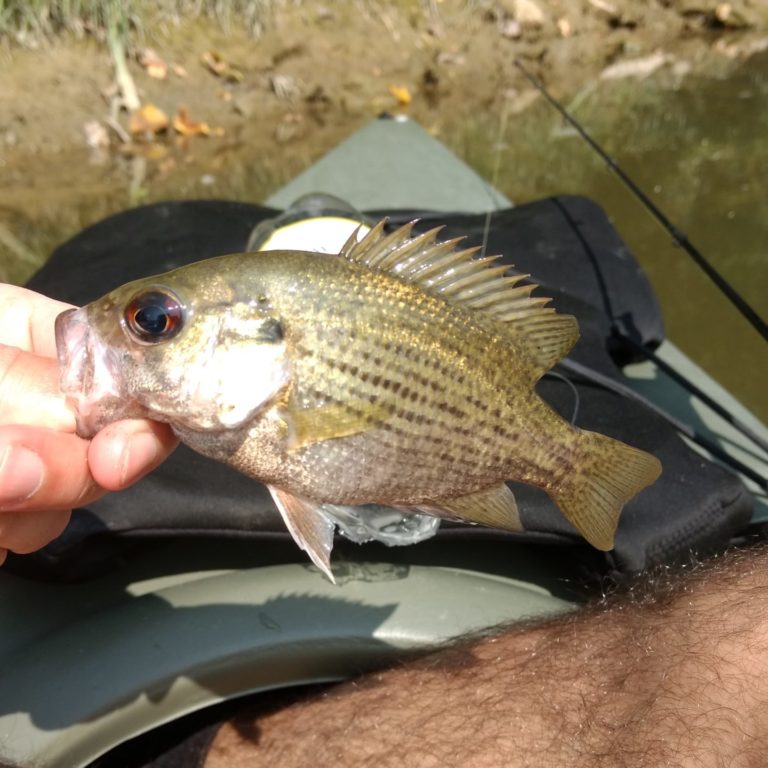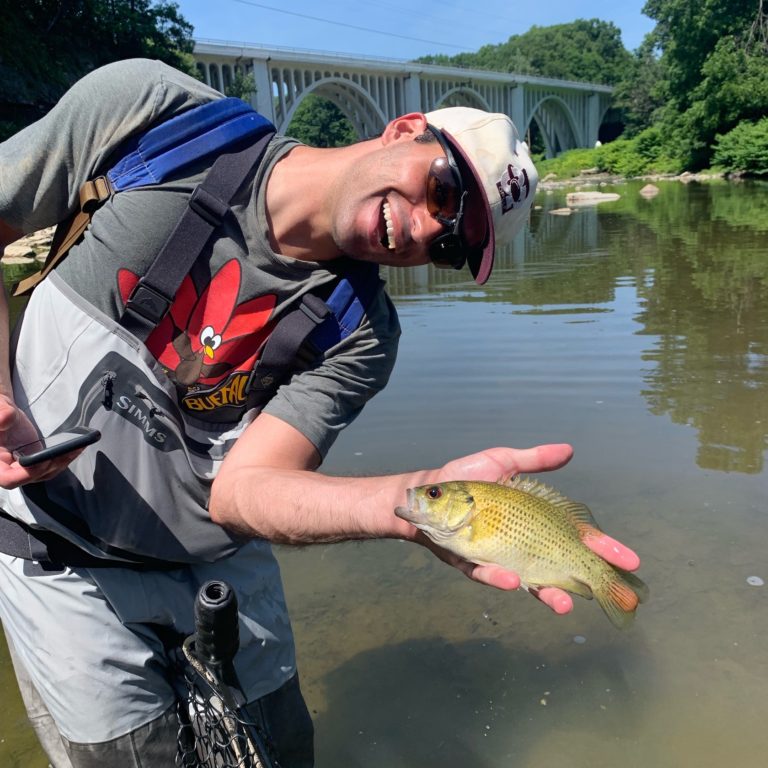The Rock Bass

The rock bass (Ambloplites rupestris) is a warm-water “panfish” found throughout western New York. Rock bass typically range between 7 and 10 inches in length and can be identified by their broad, dull green bodies, spiny dorsal fins, and patterns of dark spots that cover their bodies. The most distinguishing feature of a rock bass is its eyes, which are relatively large for their body size and blood red in color. The eyes of a rock bass make it nearly impossible to confuse with any other fish.
Habitat
Rock bass are warm-water fish and are quite temperature tolerant. Therefore, rock bass can be found in most warm-water creeks and rivers. Rock bass prefer the sluggish sections of warm-water creeks and rivers and can be found in both shallow and deep areas as long as the water is slow. Rock bass will often occupy rocky areas of creeks and they like the cover of downed trees or other structure such as bridge pilings.
Rock bass are also found in lakes and some large ponds. In general, rock bass occupy the same areas as bluegill and pumpkinseed. Rock bass usually congregate in areas with good cover close to shore. Rock bass can be found in weeds or near rock piles or downed trees. Rock bass are usually not found in deep water in lakes.
Food
A rock bass’s diet probably consists of aquatic insects and small minnows. Rock bass are predators as evident by the fact that they strike small stick baits.
Where to Catch Rock Bass
Rock bass are fairly common and can be found in all counties of western New York. Rock bass are not as common in neighborhood ponds as pumpkinseed and bluegill are; however, they are more than capable of survive there. Rock bass are usually found in larger lakes in public parks and in most of the large lakes of western New York including Erie and Ontario.
Rock bass are very common in the warm-water creeks and rivers in western New York. All the warm-water creeks in western New York most likely contain rock bass, but the big and sluggish tributaries, such as the Buffalo River, provide the highest numbers. When fishing warm-water creeks for rock bass, target sluggish water with rocks or downed trees.
The best time to target rock bass is spring through fall. Being warm-water panfish, rock bass follow a feeding schedule similar to that of bluegill and largemouth. Evenings can be particularly productive for rock bass.

How to Catch Rock Bass
Rock bass can be caught on any reasonably size bait, natural or live. A very good live bait for rock bass consists of a small hook with a piece of nightcrawler and a split shot about 6 inches from the hook. When fishing this nightcrawler rig, cast it out and let it sink to the bottom. Let the rig sit, giving it a couple twitches now and then to give it some action. It is also effective to fish a nighcrawler rig from bridges. When fishing from bridges, let out line until the worm hits bottom then slowly move the bait up and down.
Rock bass can also be caught on lures. Lures are often productive when sight fishing rock bass in creeks but work in lakes as well. Good lures to use are soft plastic worms or curly tail grubs as well as small stick baits. Rock bass will often bite small stick baits by chance when you are fishing for large or smallmouth.
